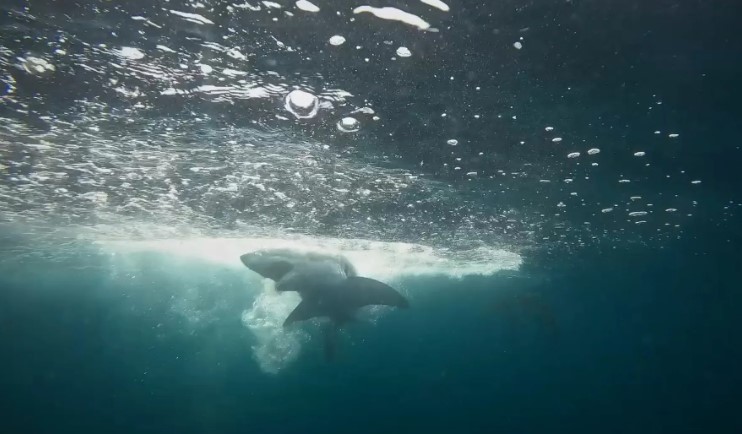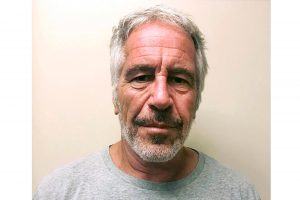
Cape Cod shark researchers take center stage in National Geographic show: ‘That was so incredible!’
What do baby sharks do-do, do-do, do-do?
Some of the top shark researchers on Cape Cod set out to reveal the secret life of the baby great white for the first time in a new National Geographic show.
Megan Winton of the Atlantic White Shark Conservancy and Greg Skomal of the Massachusetts Division of Marine Fisheries are featured in the Sharkfest show “Baby Sharks in the City,” which debuted on Monday.
The shark scientists in the groundbreaking study along Long Island, where there’s a great white nursery, deployed the first camera tag on a baby white shark in the Atlantic Ocean.
“It’s going to give us our first glimpse into the lives of baby white sharks in this nursery area,” Winton said during the show, which is also on Hulu and Disney+. “It’s such a huge moment for shark science.”
Researchers have discovered that Long Island is the nursery ground for great whites in the North Atlantic. But little has been known about the babies’ secret lives.
“So we know virtually nothing about baby white sharks,” Winton said. “We know that they’re abandoned at birth when they’re only 4-feet long. They haven’t ever hunted before. They haven’t navigated these waters before.
“How do they do it?” she added. “How do they survive? How do they escape other predators that are out there?”
With a special miniature baby camera tag, the researchers set out to track them and film them in the nursery area for the first time.
“It’s really uncharted territory as far as white shark science goes,” Winton said.
Winton and Skomal have been studying adult great whites off the Cape for years.
“I don’t think I’m mentally prepared for this,” Winton said of the baby sharks. “I’m used to seeing bigger white sharks… be prepared for a lot of squealing.”
The research team was finally able to catch one of the baby white sharks, a female that they named “Liberty” after Lady Liberty.
“Look at those tiny little teeth,” Winton said. “I mean, she’s just absolutely beautiful. A perfect mini-version of a full-grown white shark.
“She’s only a couple of months old, so like fresh out the womb, which is crazy,” she added.
After putting the camera tag on Liberty, the researchers send her off.
“Go, baby girl, go!” an excited Winton said. “Oh! That was so incredible! Oh my gosh! It’s like so emotional!”
Related Articles
A shark was reportedly stabbed by a fisherman and left on a Massachusetts beach: ‘Be aware these protected sharks are out here’
Monstrous shark that made shark science history pings off Cape Cod; killer whale spotted with a tuna in its mouth
Tiger shark washes up on Nantucket; Atlantic White Shark Conservancy reports new detection data
Orca spotted off Cape Cod. Will killer whales attack local white sharks? ‘Time will tell’
Dead seals with shark bites found along Cape Cod: ‘Be aware of the sharks’ presence in the shallow waters’
As Liberty swims away, the mini camera records her every move. The special onboard sensors monitor her acceleration, depth and the water temperature.
Liberty spent the first two days after she was tagged diving up to 150 feet between the surface and the seafloor. Adult white sharks use the same yo-yo diving method when they’re hunting.
The researchers were eventually able to retrieve the tag off Montauk, Long Island.
“This is really an incredible moment,” Winton said of getting the tag back. “This contains the first insights into the lives of baby white sharks here, ever, ever!”
Also during the show, Skomal is seen off Martha’s Vineyard — where there had been reports of baby great whites being caught by fishermen.
“This summer we’ve seen some of the highest water temperatures ever recorded, so if the nursery habitat is expanding in these areas, and we start to see overlap with the bigger white sharks, that could be a real problem,” Skomal said. “It’s a perfect storm because bigger white sharks will have no problem eating smaller ones.”
Megan Winton of the Atlantic White Shark Conservancy is featured in a new National Geographic Sharkfest show. (National Geographic/Brandon Sargeant)


